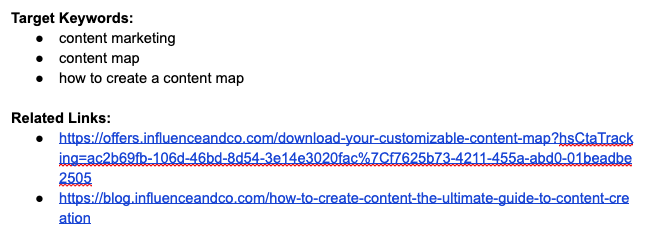Content marketing and SEO are like a sailboat and its sail. They need each other. Just like your sailboat’s not going anywhere fast without a sail, your content isn’t going to help you reach your goals if people can’t find it. And finding it might be harder than you think.
In a time when there are nearly 80,000 Google searches per second, breaking through the noise can seem impossible. Only 9% of content actually sees organic traffic from search results, and nearly 70% of all clicks go to the first five organic search results.
So how can you compete in this race to the top of search engine results pages to make sure your target audience can find your content?
By thinking about SEO at every single stage of the content creation process.
Keeping SEO in Focus Throughout Content Creation
Creating high-quality, educational, engaging content is an honorable pursuit, but in order for that content to actually be valuable, you can’t ignore SEO as you’re planning and creating your content. After all, content can only be valuable to someone if she knows that it exists.
So as you’re developing your next batch of content, here’s how you can consider SEO and implement SEO strategies at every stage of the content creation process:
1. Brainstorming
From the very start of content creation — even before you’ve nailed down definite content topics — you should be considering SEO. Two ways you can do that are by looking into which subjects you should cover based on what your audience is searching for and researching potential publications you might want to target.
Let’s start with keyword research. You can use a tool like Ahrefs, SEMrush, or Moz to get a grasp on what your audience members are searching for now, how they’re searching for it, and what other content is ranking for those keywords. This research will tell you which keywords you rank for, your position in search results for each keyword, and the traffic that keyword attracts, just to name a few metrics.
As you’re researching keywords to gather content topic ideas, start broad with your overall content theme. For example, if you’re looking into what your audience is searching for related to content marketing, start there. When you search for content marketing in one of the above tools, it will return variations of other keywords that people are searching for that are related to content marketing, such as what it is, techniques, strategies, ROI, case studies, examples, and more. This will help you cast a wide net from the start and narrow your focus from there.
Once you have this information, you can discover what content your audience finds valuable and take the next step of determining how you can create content that’s higher-quality and more engaging and relevant to your audience.
Next, for guest-contributed content, consider which publications you might want to target based on your niche and subject matter expertise. Once you have that list, research those publications. It’s important to choose publications that are reputable authorities within your industry. While domain authority isn’t a direct ranking factor, a site with a higher DA is perceived as more authoritative, which can potentially lead to more eyeballs on your content and, therefore, a higher ranking due to that engagement. Not sure which sites qualify as authoritative? A good test is to ask yourself whether you’d be comfortable sharing an article from the publication with your colleagues and friends. If not, keep looking.
In addition to considering publications’ credibility, you’ll also want to look at what types of links these publications include in their articles. You can use a tool like MozBar to see which links in an article are nofollow or follow and internal or external. A follow link is acknowledged by search engines and drives SEO juice for the linked site. But keep in mind that just because a site doesn’t use follow links, that doesn’t mean it won’t advance your content goals. Follow links do carry link juice, but you can still gain valuable organic referral traffic to generate leads without those follow links.
Also check to make sure the publication uses contextual links (tools like cognitiveSEO can help with this). Contextual links are links that are surrounded by relevant text within the body of a piece of content. For example, in an article I recently published in CMI, I included an educational link that was directly related to the surrounding text:

Getting those contextual links in high-authority publications helps Google establish the relevancy of your content, and these links can boost your click-through rate by providing readers with additional valuable information.
2. Outlining
Once you’ve chosen a content topic (and a publication target for guest-contributed content) based on your research, you can begin the outlining phase.
Start by determining a few primary keywords you’re focusing on in this specific piece of content. List out some related long-tail keywords and keyword variations you might consider including so you can keep them in mind during the writing stage. Also, pinpoint any related links you’d like to try to include naturally within the content. Here’s an example:

Next, write up a brief summary of the topic. What’s the big picture? What will this article cover, and what value will it provide to readers? Make sure this summary ties back to your target keywords. Here’s an example (notice the underlined target keywords):

Once you have that summary in place to guide you, you can create a bulleted outline including the actual information you want to cover within the article. Include your own insights, the takeaways you want readers to walk away with, and relevant examples and research.
3. Writing
When you’re writing your content, remember to write for people first. Write content that is helpful, educational, and engaging, and optimize from there.
When you’re including keywords, use both short- and long-tail keywords naturally. These days, search engines are trying to curate search results that ring true to the searcher’s intent, and to do that, they’re trying to understand the searcher’s natural language in the same way another person would. So make sure you’re including your keywords in a way that would match up with what your audience members are looking to learn based on their search.
Searcher intent is also important when determining the length of your content. If you’re focusing on a keyword that people are searching for when asking a simple question, you might want to keep the content short and sweet — they’re probably not in the market for a long guide. (However, it’s still important to balance out those shorter pieces of content with long ones so you can provide valuable content to members of your audience at every stage of their journey with your company.
Also, remember that search isn’t limited to text anymore. By 2020, almost a third of searches will be done without the help of a screen (think Siri, Amazon Echo, and Google Home). And research shows that only 1.71% of voice search results have the exact match keyword in their title tag. So make sure you’re including keyword phrases in a way that people might speak them to help your content rank in voice search. For example, in addition to the keyword “content marketing strategy,” you might also want to include something like “how can I create a content marketing strategy.”
Finally, as you’re writing your content, make it digestible. For content that’s on the longer side, use subheadings and bullet points to break up the content to provide a better experience for the reader.
Also, look for opportunities to optimize your content for Google’s “featured snippet” box, also known as “Position 0.” Only 12.3% of search queries result in a featured snippet box, and 93% of SEO experts say that claiming the featured snippet box can drive more clicks and visits to a website. A few ways you can optimize your content for the featured snippet box are posing a question in a header and then concisely answering the question directly below, including FAQ schema, and providing a table of contents with anchor links.
4. Editing
Once you have a written draft put together, it’s editing time! It’s best to have someone other than the writer edit the content because a fresh set of eyes is more likely to catch grammatical errors and other content issues.
During the editing stage, make sure the keywords read naturally within the copy. Be on the lookout for keyword stuffing (i.e., including tons of keywords without regard for readability) or missed keyword opportunities, and double-check that any hyperlinks you’ve included are placed on keyword phrases when possible.
The anchor text for hyperlinks should be relevant to readers based on where they are within the article, and it should make sense for them to want to click another link. For example, let’s say a reader stumbles across this sentence: “It’s important to optimize your blog posts for SEO.” When the reader sees that “optimize your blog posts” is linked, he will probably assume that the link goes to a page that provides advice on optimizing blog posts for SEO. But if that link leads straight to a homepage that contains no helpful insights related to that topic, the reader will probably get frustrated and bounce.
It’s also important to ensure the content title is relevant and includes keywords so your audience members can find the content in search and see clearly that it can help them solve their pain points or answer their questions.
Next, take a step back and make sure the content is formatted for readability on mobile. Google research found that there are more Google searches on mobile than desktop, so this couldn’t be more important. To ensure your content is formatted for mobile, Jumpfactor CEO Zamir Javer recommends that you “use the squint test to scan the page to identify design and layout flaws so that you can adjust the layout to make it more readable. Don’t bring your readers to a page with a wall of text, or they will leave just as fast as they came. This will ultimately erode your search visibility as Google measures site interaction as a signal for rankings,” This squint test should be done on a mobile device to confirm that everything looks great for your mobile readers.
Evaluate whether there are enough subheadings within the content. Subheadings break up content to make it digestible and less overwhelming for readers, which can improve the user experience and time on site, which then boosts your search rankings. Include relevant keywords within subheadings when appropriate so readers can quickly see that the content is relevant to them and what they’re hoping to learn.
5. Prepping for Publishing
Congratulations! You’ve created a high-quality piece of content and have kept SEO in focus throughout the journey. But the work isn’t finished quite yet if you’re creating content for your own site.
Don’t forget to add alt text for any visual elements you’re including. Alt text describes what an image or other visual element contains. This makes your content accessible for people with visual impairments and makes sure Google correctly interprets what those visual elements are.
Also, create an SEO title tag that’s 60 characters or less and a meta description that’s 155 characters or less. The title tag denotes what will appear as the page title in search results, and the meta description is the descriptive text that appears just below the title in those results. These elements ensure searchers can clearly see what your content is about and are enticed to click through to it. Make sure this metadata is both keyword-rich to help with rankings and engaging to drive click-through rates.

Finally, do one last check to make sure the content is visually easy to follow and doesn’t bombard readers with a big wall of text.
Well, there you have it! You’re now armed with the information you need to stay focused on SEO throughout the entire content creation process — all while creating high-quality, engaging content that your audience will love.
Still have lingering questions? Or are there any other strategies that have worked well for you? I’d love to hear from you in the comments.
Kelsey Raymond is the co-founder and CEO of Influence & Co., a full-service content marketing firm that specializes in helping companies strategize, create, publish, and distribute content that accomplishes their goals. Influence & Co.’s clients range from venture-backed startups to Fortune 500 brands.
This article was originally published on Search Engine Watch.
Are you ready to dive deeper into how you can improve your SEO strategy through content marketing? Download your free guide:












